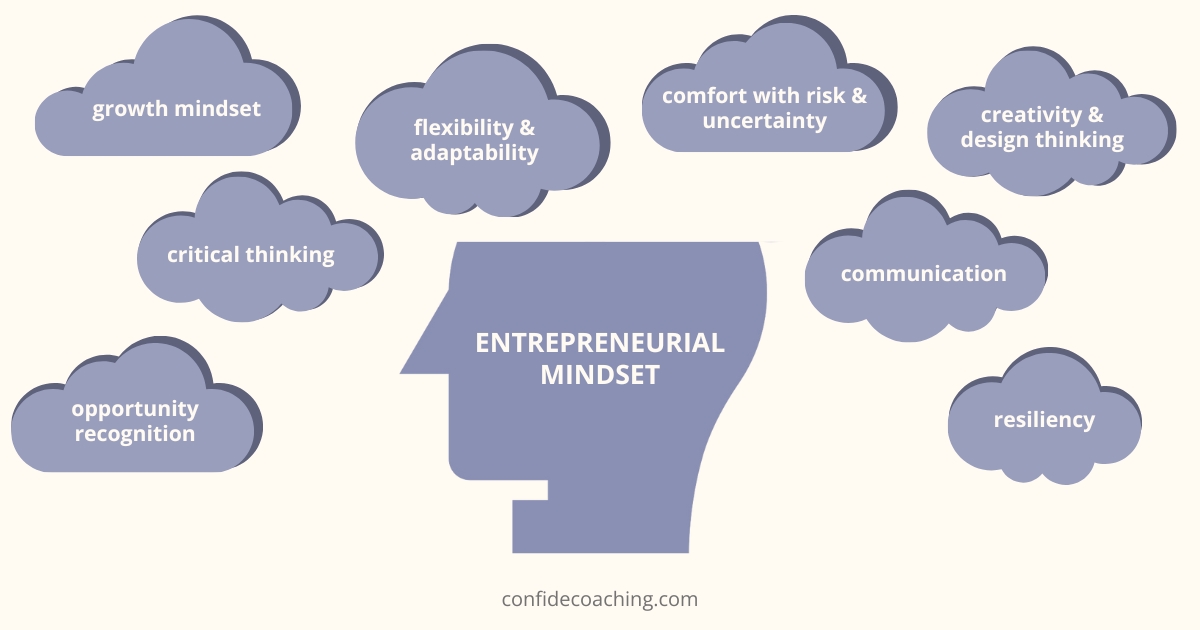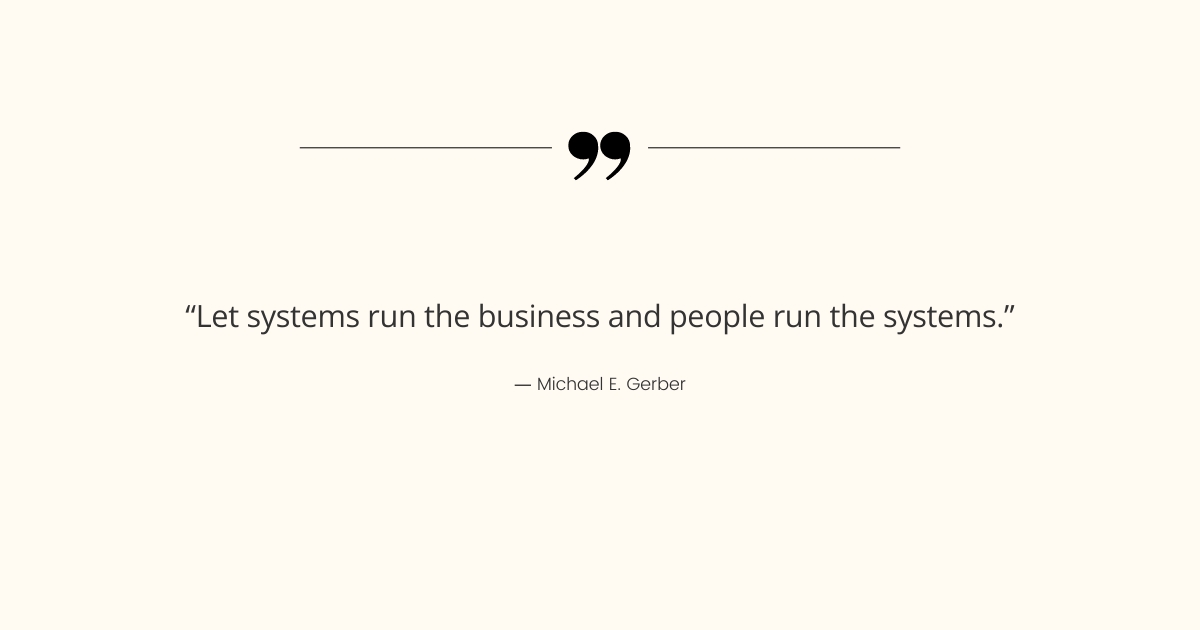
Have you ever found yourself pondering if you should leave your corporate job to start a business you’re more passionate about? This question marks the beginning of a significant journey for many of my clients, as they weigh the comfort and security of a 9-5 job against the allure and independence of entrepreneurship.
This article is written to help you through this crucial decision-making process, offering actionable insights and real-life examples.
As a life coach who has worked with hundreds of entrepreneurs, I hope to evoke new ways of thinking and illuminate the path from corporate employment to entrepreneurship, equipping you with the knowledge to decide which route aligns best with your life’s goals and passions.
Assessing Your Current Situation
The Comforts and Constraints of a 9-5 Job
In my coaching experience, many clients express a sense of security and predictability in their corporate roles. A steady paycheck, benefits, and a clear career path offer a comforting structure.
However, this comfort often comes with constraints – limited freedom to explore personal passions, rigid schedules, and the feeling of being just another cog in the machine. It’s essential to acknowledge both the advantages and limitations of your current role.
The Allure and Anxieties of Entrepreneurship
The path to entrepreneurship is painted with the promise of autonomy, the pursuit of passion, and the potential for significant financial rewards. Yet, this path is also laden with uncertainties – financial instability, overwhelming responsibilities, and the fear of failure. These dualities create a complex emotional landscape that prospective entrepreneurs must navigate.
Activity: A Self-Assessment to Evaluate Personal Satisfaction and Aspirations
To gain clarity, I encourage you to conduct a self-assessment. Consider your current job satisfaction, your values, and what you aspire to achieve in your career. Reflect on questions like:
- What aspects of my current job do I find most fulfilling?
- Which of my passions am I unable to pursue in my current role?
- How do I handle uncertainty and risk?
- What does success mean to me, and can I achieve it on my current path?
This self-assessment is a crucial step in understanding where your heart lies and what path might lead you to your life’s goals and passions.
Remember, the journey towards entrepreneurship is as much about understanding yourself as it is about understanding the business landscape.
Understanding the Entrepreneurial Mindset
Key Traits of Successful Entrepreneurs
Successful entrepreneurs often share common traits that enable them to navigate the complexities of starting and running a business. These include resilience, the ability to embrace failure as a learning opportunity, a strong sense of vision and purpose, and an unwavering belief in their ideas. Additionally, successful entrepreneurs are adaptable and are able to pivot in response to challenges or new information.
Mindset Shifts from Employee to Entrepreneur
Transitioning from an employee to an entrepreneur requires a significant shift in mindset.
As an employee, one might focus on excelling within a defined role, seeking approval from superiors, and maintaining the status quo.
Entrepreneurs, on the other hand, must cultivate a vision that drives the business forward, make decisions amidst uncertainty, and take full responsibility for the outcome of those decisions.
Bottom line: you have more skin in the game.
This shift involves moving from a mindset of seeking permission to one of taking initiative, from fearing failure to learning from it, and from relying on external validation to trusting one’s own judgment.

Evaluating the Risks and Rewards
The Financial Implications of Leaving Your Job
Leaving a corporate job to embark on an entrepreneurial venture carries significant financial implications. It often means giving up a steady income, benefits, and potentially investing a substantial portion of your savings into your new business.
Planning for financial uncertainty is crucial, requiring a solid understanding of startup costs, living expenses during the business development phase, and strategies for financial management without a regular paycheck.
The Emotional and Lifestyle Changes Involved
The journey from employee to entrepreneur is not just a financial transition but an emotional and lifestyle overhaul. It can lead to increased stress due to uncertainty, the pressure of decision-making, and the isolation that can come with leaving a team environment.
However, it also offers the potential for immense personal growth, a deeper sense of purpose, and the flexibility to design a lifestyle that aligns with your values and ambitions.
Tool: Risk-Reward Analysis Template
To navigate these financial and emotional considerations, a Risk-Reward Analysis Template can be invaluable.
This tool helps you systematically evaluate the potential risks and rewards of leaving your job for entrepreneurship. By quantifying financial risks, assessing the emotional impact, and aligning these with your personal and professional goals, you can make a more informed decision about whether this transition is right for you.
Risk-Reward Analysis Template for Aspiring Entrepreneurs
Personal Information
- Name:
- Current Occupation:
- Business Idea/Industry:
Financial Risks
- Current Savings: Estimate of total savings available.
- Investment Needs: Estimated initial investment required for your business.
- Monthly Living Expenses: Estimate of monthly expenses without a regular paycheck.
- Revenue Projection: When do you expect your business to start generating revenue? (Paul’s advice: Take this number and double it!)
Emotional and Lifestyle Considerations
- Stress Level: Anticipated stress level from financial uncertainty, decision-making, etc. (Low, Medium, High)
- Work-Life Balance: Expected impact on your work-life balance (Improve, Worsen, No Change)
- Personal Fulfillment: How much more fulfilled do you expect to feel running your own business? (Low, Medium, High)
Potential Rewards
- Financial Independence: Potential financial gain from the business in the long term (Low, Medium, High)
- Personal Growth: Opportunities for personal growth and learning (Low, Medium, High)
- Lifestyle Flexibility: Degree of lifestyle flexibility and freedom (Low, Medium, High)
Decision Making
- Readiness for Entrepreneurship: Assess your readiness based on financial stability, emotional resilience, and personal aspirations (Not Ready, Somewhat Ready, Fully Ready)
- Action Plan: Briefly outline the first steps you would take if you decide to pursue a new venture.
When a client contemplates leaving their corporate job for entrepreneurship, I often recommend exploring the innovative thinking approaches of Dave Evans and Bill Burnett. These co-authors of “Designing Your Life” and “Designing Your New Work Life” have developed a framework that uses design thinking principles to help us create fulfilling and meaningful careers, either improving our current job satisfaction or taking a leap into entrepreneurship.
Their approach, grounded in design methodologies taught at Stanford University, encourages experimenting with different career “prototypes,” (entrepreneurship is a career choice too!), building a supportive network, and learning through an iterative process.
This methodology is particularly effective because it applies the same creativity and problem-solving skills that designers use to solve a problem or come up with innovative solutions, making it an invaluable tool for those considering a significant career transition.
Preparing for the Leap: A Design Thinking Approach Inspired by Evans and Burnett’s “Designing Your New Work Life”
Embracing Prototyping as a Path to Clarity
Start by prototyping different aspects of the entrepreneurial life you envision. This could involve side projects that align with your passions, volunteering in startup environments, or conducting informational interviews with entrepreneurs.
These exploratory steps are crucial for gaining real-world insights without the full commitment, helping to clarify whether this path truly matches your desires and lifestyle.
Building a Learning Network
Your journey should include building a network not just for connections, but for learning from those who’ve successfully navigated the entrepreneurial path.
Find mentors who embody the entrepreneurial spirit and dive into deep conversations about their experiences. This network will become a foundational support system, offering guidance, feedback, and encouragement as you progress.
Iterating Your Way Forward
Adopt the mindset that your initial business idea might evolve. Use the design thinking process of iteration—propose, test, learn, and revise—to refine your business model. This approach emphasizes learning from each experience, whether it leads to success or failure, and using those insights to continuously improve your strategy.

By integrating the principles of Dave Evans and Bill Burnett, you’re not just preparing to leave your corporate job; you’re designing a career that resonates with your personal values and aspirations, ensuring a more fulfilling entrepreneurial journey.
This process encourages you to view your career through a lens of possibility, fostering creativity and innovation in plotting your path forward. And sometimes, the outcome is surprising—you may discover a new career path within your current job that was previously unseen, revealing opportunities for growth and fulfillment right where you are.
Making the Decision
When to Know It’s Time to Leave Your Job
After fully embracing the principles of Dave Evans and Bill Burnett, exploring all possibilities within your current role, and still feeling that leaving is the right decision, it’s crucial to recognize when it’s time to make the leap.
This realization often comes when you’ve identified that despite potential new paths in your current job, your aspirations or personal values no longer align with your role, you’re drawn consistently towards entrepreneurship, and the limitations of your corporate position overshadow its benefits. It’s a moment of clarity where listening to your intuition and acknowledging your readiness for a fulfilling challenge becomes essential.
Planning Your Exit Strategy
An effective exit strategy is crucial for a smooth transition from employee to entrepreneur. Begin by solidifying your business plan, ensuring you have a financial safety net in place, and gradually reducing your commitments at your current job to focus more on your entrepreneurial venture.
Communicate your plans respectfully to your employer, considering the timing and manner that maintain professional relationships and potentially allow for a return if needed.
Don’t Hold Back Difficult Conversations
Engaging in open and honest discussions is crucial when considering a significant transition like leaving your corporate job for entrepreneurship. It’s essential to ensure that your spouse or partner is fully supportive of this decision, given its potential impact on your shared life.
Ethically, it’s important to transparently discuss what this change entails, including the need for possibly increased support at home or understanding any financial implications. Such conversations pave the way for a supportive environment, crucial for navigating the uncertainties of entrepreneurship together.
Checklist: Before You Leave Your 9-5
- Financial Preparedness: Save at least 6-12 months of living expenses.
- Market Validation: Ensure your business idea has been tested and validated.
- Legal and Administrative Setup: Register your business, and understand any legal requirements.
- Support Network: Build a network of mentors, advisors, and peers.
- Personal Readiness: Mentally prepare for the uncertainties of entrepreneurship.
- Exit Communication: Plan how to communicate your departure to your employer and colleagues.
- Difficult Conversations: Have open discussions with your spouse or partner about the transition and its implications.
By thoughtfully preparing and engaging with each of these considerations, you’re not just making a leap into the unknown; you’re stepping confidently towards a future that aligns with your deepest values and aspirations. This approach ensures that when you do leave your 9-5, you’re well-equipped for the entrepreneurial journey ahead, supported by a foundation of careful planning and open communication.
Ready to make a move? Let’s go.
First Steps Towards Entrepreneurship
Embrace the transformative journey from corporate employee to entrepreneur with fresh energy and an open mind. This exciting phase is about translating your vision into tangible actions and laying a solid foundation for your future business.
Laying the Foundations of Your Business
Vision and Goals
Start your entrepreneurial journey by clearly defining your vision. What problem does your business solve? Who are your customers? Next, translate this vision into strategic, achievable goals. Break these goals down into specific skills, abilities, and competencies you’ll need to achieve them. This clarity will guide every decision and action you take moving forward.
Team and Outsourcing
Reflect on the team you need to bring your vision to life. You can’t do everything alone. Identify the roles critical to your business’s success—consider both the core competencies you need in-house and the functions you can outsource. This early planning is vital for building a balanced, effective team.
Systems and Automation
Avoid likely entrepreneurial burnout by drawing from the principles of “The E-Myth Revisited” by Michael E. Gerber. The goal, Gerber teaches us, is to build a business that can operate efficiently without your constant involvement.

Start by establishing systems for critical operations, from customer service to inventory management. Think about automation tools that can handle repetitive tasks, and how you can document processes so your team can run them without your direct input. This foundation not only optimizes efficiency but also prepares your business for scalable growth.
By focusing on these foundational elements, you’re not just starting a business; you’re building a machine that can grow, adapt, and thrive, potentially even in your absence. This approach ensures that you’re working on your business, not just in it, paving the way for long-term success and fulfillment.
Finding Support and Resources
Success doesn’t happen in a vacuum, and venturing into entrepreneurship doesn’t mean going it alone. Seek out a community of mentors, industry experts, and fellow entrepreneurs who can offer guidance, support, and invaluable insights. Engage with online forums, local networking events, and workshops to expand your knowledge and resources.
Additionally, stepping outside your usual circles to seek new perspectives can spark innovative ideas. This approach encourages making surprising connections and fosters a culture of continuous learning and adaptation, which can lead to breakthroughs in your business model and strategy.
Setting Up for Success in the First 90 Days
Focus on achieving quick wins and building momentum in your initial 90 days. This period is crucial for validating your business concept, understanding your market, and beginning to build your brand.
Prioritize activities that offer the most learning and growth potential, such as launching a pilot version of your product or service, securing your first client, or finalizing your business’s legal structure. Keep adapting your strategy based on feedback and market demands, ensuring you’re always moving closer to your goals.
Don’t get hooked on perfectionism; strive for “good enough” and launch your initiatives boldly. This mindset will enable you to iterate and refine based on real-world experiences, fostering a dynamic approach to growth and problem-solving.

Embrace the philosophy of continuous improvement, allowing each step, each feedback loop, to guide your adjustments and enhancements. This proactive, responsive strategy ensures that your business remains agile and aligned with evolving market needs, driving you toward your long-term vision with each small success.
As you embark on this path, let passion, planning, and perseverance be your guiding principles. Your entrepreneurial journey is not just about building a business; it’s about realizing a vision that’s deeply aligned with your values and aspirations. Always strive to understand your motivation.
The more you know about your own needs and wants, the stronger your strategic position can be. Let this knowledge fuel your determination to create something truly meaningful for you. Embrace this adventure with an open heart and an unwavering commitment to your dreams.
The path ahead is yours to shape—dare to take the first step today, armed with the knowledge that every challenge is an opportunity for growth, every setback a lesson learned, and every success a step closer to realizing your vision. Let your journey inspire others, proving that with the right mindset, anything is possible.

Paul Strobl, MBA, CPC
Owner of Confide Coaching, LLC
Paul is a Master Life Coach for individuals, executives and business owners. Originally from Houston, Texas, he has been location independent for most of his adult life. He currently resides in the Rhodope Mountains of Bulgaria near the Greek border with his brilliant wife, 13-year-old stepson (officially adopted in 2021!) and a Posavac Hound rescue.
References
Burnett, Bill, and Dave Evans. Designing Your Life: How to Build a Well-Lived, Joyful Life. Knopf Doubleday Publishing Group, 2016.
Burnett, Bill, and Dave Evans. Designing Your New Work Life: How to Thrive and Change and Find Happiness–and a New Freedom–at Work. Vintage, 2021. ISBN 9780593467459.
Gerber, Michael E. The E-Myth Revisited: Why Most Small Businesses Don’t Work and What to Do About It. HarperCollins, 2004.

